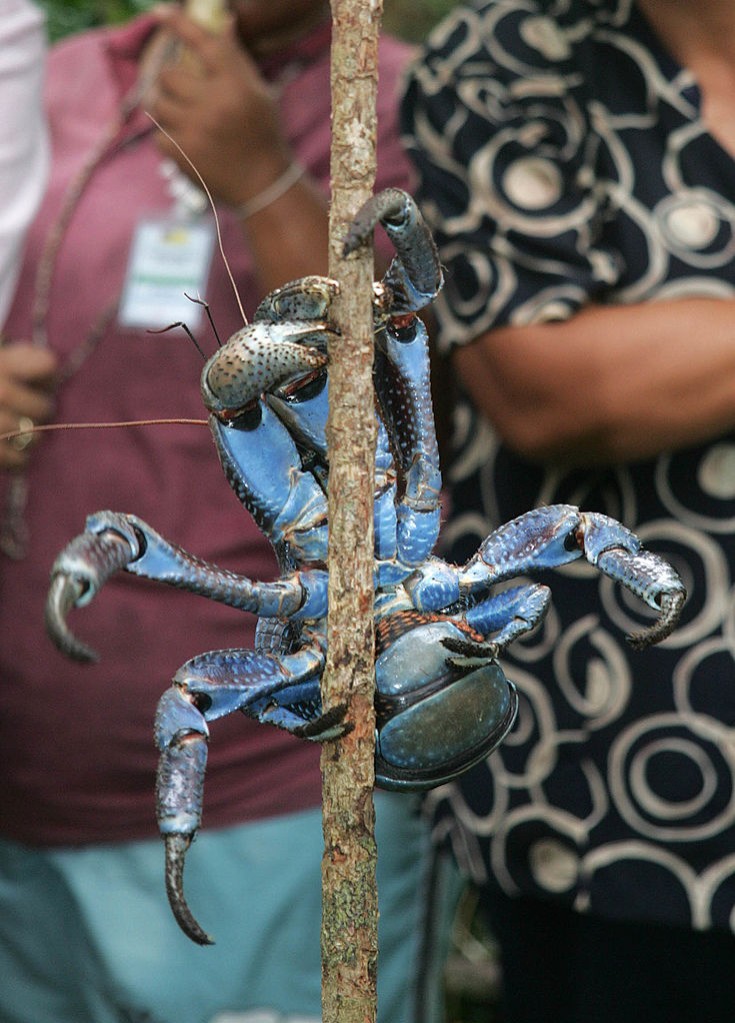Populations of coconut crab are only seen in islands across the Indian Ocean and the central Pacific Ocean, with most of their abode located close to the shore. Though they are akin to hermit crabs, these very huge crustaceans only live on land and do not have the ability to swim once they become adults.
Learn about the story surrounding these animals, whether or not they cause danger to humans, and more fascinating details with these 6 enthralling coconut crab facts.

1. Coconut Crabs Are the Largest Terrestrial Crustacean
The Japanese spider crab is the world's largest crustacean, but since they purely dwell in waters, the coconut crab takes the title of the largest crab seen on land. They average more than 5 pounds in weight (though some are up to 9 pounds) and have 36 inches leg span.
2. The Shell of Coconut Crabs Are Blue or Red in Color
Experts are still not certain of what influences the color of a coconut crab, which ranges from turquoise blue to bright red. The color is usually just highlighted on specific parts of the crab's brown body, but some are much more obvious than the others. Studies have revealed that their color doesn't depend on their size or sex, nor does it have to do with pinch force strength.
Also Read: Massive Invasive Crab Will Spend New Year's in Hawaii
3. They May Be the Reason the Body of Amelia Earhart Was Never Discovered
One of the many theories concerning the well-known aviator Amelia Earhart's disappearance is that the American aviator crash-landed on an island in the Republic of Kiribati in the central Pacific Ocean. Particularly, experts are convinced that the tragedy happened on Nikumaroro Island, which is historically profuse with coconut crabs.
4. Coconut Crabs Feed on Coconuts
Predictably, coconuts make up a good part of their diet. All thanks to their bent legs and inward grip, they can walk up palm trees and make use of their strong claws to crack coconuts open effortlessly. They don't feed on just coconut, however, as they've also been seen preying on animals like migratory seabirds, rats, and even on one another.
5. Coconut Crab is a Type of Hermit Crab
Although the coconut crab is the only species that belong to the genus Birgus, it is akin to hermit crabs that live on land, and they possess similar feature. Coconut crabs possess a thin, soft shell when they're born, which they like to safeguard with an empty seashell until it becomes strong. Of course, they grow out of their seashells very quickly and rather grow to depend on their hard exoskeleton for protection instead.

6. They Have a Strong Sense of Smell
Since coconut crabs hunt mostly at night, their sensitivity to smell is crucial for their survival. As they hunt for food in the dark, the smell of nuts, fruit, or small animals leads the crabs to their prey.
Related Article : Heavyweight Crustacean: Coconut Crabs Can Pinch Like Lions, Lift More Than 66 Pounds
For more news, updates about coconut crabs and similar topics don't forget to follow Naure World News!
© 2025 NatureWorldNews.com All rights reserved. Do not reproduce without permission.





